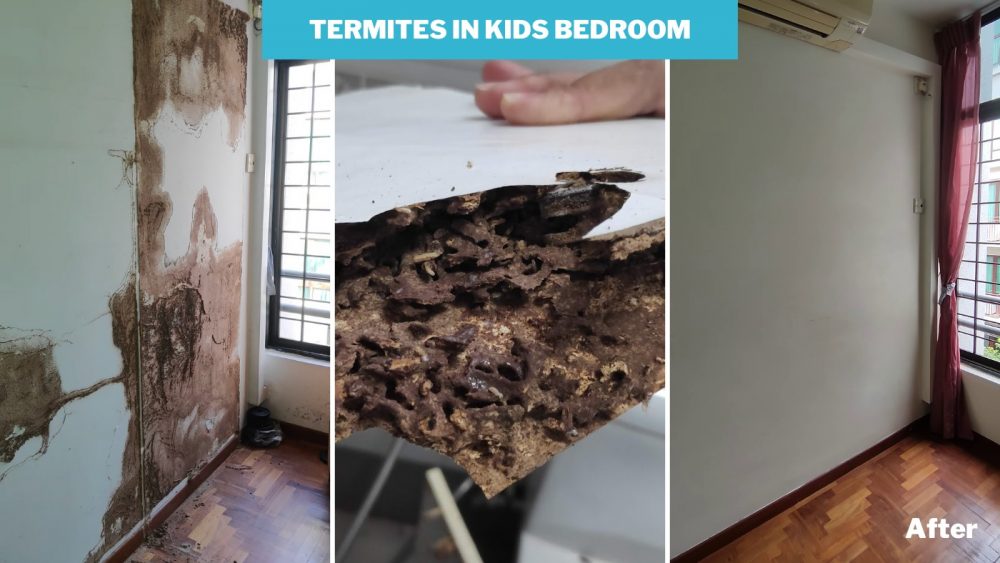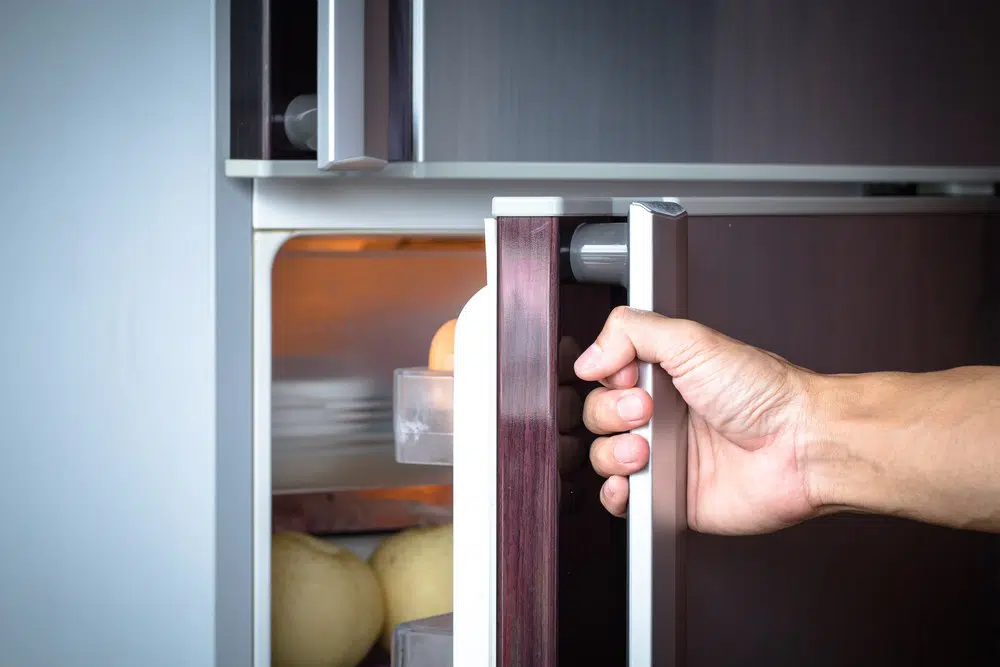Did you know that termites eat up to RM400 million in property damage every year? That’s countless levels of floors, walls, and ceiling brought down to dust by colonies of mere pests.
Your home vanishing to bits within a year is quite the exaggeration, but basic knowledge about termite infestation and how it affects your home foundation could save you tons of money.
Here are all the things you need to know about termite infestation, how to identify them, and termite control measures.
What are termites?
Termites are tiny insects known for their relentless feed on wood and dead plantations. Most species come in white to cream-ish colours with soft unsegmented bodies, straight antennae, and sometimes winged. Some termites are also darker in shade.
They are also commonly known as white ants, although both are inherently different insects and treatment for each are not the same.
These insects tend to inhabit dark humid confines such as hollowed wood, cracks, beams, and under floorboards as they eat away into the foundation of your home.


Common types of termites in Malaysia
Subterranean termites: This species is easily identifiable and notoriously the most destructive type of termites. They thrive in moist environments for optimal breeding temperature and can be found underground.
The usual method of entry for subterranean termites is usually by digging through underground tunnels to the house’s slab, before finding a crack or gap to access the wood foundations.
Other points of entry include gaps and cracks from porches, backdoors, sidewalks/corridors, or any areas close to the house foundation.

Drywood termites: Unlike the former, they do not need moisture, and are easily found within hollow wood foundations with a great capacity to wreak damage towards a structure’s integrity. Their colony’s growth is exacerbated by higher humidity levels, causing greater overall damage over time.
Since they don’t build mud tubes like subterranean termites, they simply fly towards wood and begin infesting it.
The common targets for infestation are cracks around door and window frames, furniture, beams, and walls.

Dampwood termites: Dampwood termites, like its name, seek high levels of moisture. They tend to hollow out dampened wood pillars. If you do find dampwood termite infestation, it’s better to resolve it as soon as possible to avoid a large construction cost.
Usually, dampwood termites can be found outdoors inhabiting moist plants and trees. Target areas might include damp furniture in gardens, porches, and patios.

Conehead termites: Its name derived from its cone-shaped head. Like subterranean termites, they build tunnels to get around. The difference is that conehead termites build wider tunnels but wreak just as much damage as subterranean ones.
These termites typically infest the wooden structure of your home like wooden beams, walls, and floors.

What attracts a termite infestation?
Termites feed on food that has cellulose, primarily wood, but are primarily attracted to damp wooden patches and soft wood. Therefore, It is crucial to fix any leaks and plumbing in your house.
How to tell if you have a termite infestation
With a habitat of living in dark and humid places, termites are extremely difficult to identify in plain sight. This way, they can live for way longer and eventually compromise your property structure. But if you can, there are tell-tale signs of termite infestations for your home:
Sound of Munching Wood: Termites are ironically noisy-eaters. Soldier termites even bang their head on the wood when they sense a danger to alert the colony. So, when you keep your ear close to the infested area, you can hear munching sounds by termites.
Mud tubes: Subterranean termites build mud tubes acting as a bridge and a protective shield for the termites to travel back and forth between colonies and to cover the area of wood they are munching. They can commonly be found lining the wall edges or crawling across the wall.

Frass or Termite Droppings: Termite droppings, also known as frass, typically looks like a brown, dirt-like powder. It’s basically leftover dry wood shavings termites leave from munching. Homeowners tend to brush it off as dirt so make sure to be alert and perform regular termite inspection.

Termite Swarms: If you see any flying ants or discarded wings on the floor of your property, it’s a clear sign of termite infestation. The reason behind this is because male and female termites shed off their wings once they have built their nest and started a colony.

Doors and windows that are hard to open: Tight windows and doors are usually caused by hot and damp weather, but another reason could be termites. Because they produce a ton of moisture while tunnelling and chewing through wood, it causes the wood to swell and disintegrate.
Hollow-sounding wood: Try knocking on wooden door frames, walls, or floors and if you hear a hollow sound, then it is probably due to termite infestation. Termites go through every inch of the wood inside, leaving only the outer layer and paint.
What is the best way to kill termites?
Soil treatment/liquid injection treatment
It is an effective solution for termite control where a repellant chemical solution called termicide is injected or sprayed onto the soil under your property. There are two ways to do this treatment:
Inject into the soil under your house: The treatment is done before construction such that it helps termite infestation in future. Termicide is sprayed onto the soil before the concrete floor slab is placed.
Inject under your flooring: Holes are drilled into the floor and injected with the chemicals to kill off the termite infestation and then sealed afterwards.
Inject into your furniture directly: As for drywood termites that build their nest above ground, they survive without soil and draw moisture from the air and the wood they infest. Their infestation could either be limited to one area or spread across to other furniture. Treatment for this termite species is slightly different, which is to drill holes into the wood and inject them with termicide.
Termite baiting system
So far, it is the best approach for eliminating entire termite colonies without creating any disruption to property owners. It is a well-proven method that protects your property in the long term. It works by targeting worker termites. With them no longer active, the queen and soldier termites end up dying of starvation with no food supply.
Termite baiting is a gradual process that takes several weeks to months depending on the infestation size and involves a few steps:
1. Pre-baiting: Termites can only eat wood and cellulose, so first the feeding cycle must be established for the termite colony. In the initial process, scouts will find the termite bait station and leave a scent for the worker termites to follow and feed on these stations. Once a feeding cycle is set, the wood will be replaced with undetectable toxic chemicals that kill them. With no worker termites, the population slowly starves and dies.
2. Using Growth Hormones: The next step is to inject hormones into the feeding station to be consumed by termites. The growth hormones stop them from molting and reproducing. The quantity of hormones injected depends on the size of the termite colony.
3. Termite Control: Once enough worker termites are killed, the king, queen, and soldier termites begin to dwindle down as the entire population dies of starvation.
Price of termite control treatment
How much do pest control companies charge to do termite treatment? The cost will vary depending on the size of the house, but general pricing starts from:
Soil treatment
RM2.50 per sqft
*Service comes with 5 warranty
Termite baiting
RM1,200 – Condo, single storey, double story
RM1,800 – Semi-D and bigger
RM2,000 – Bungalow and bigger
*Service comes with 2 years warranty
Source: Uni Smart Pest Control
Commonly asked questions about termite control treatments
1. How safe is termite control?
When administered correctly by an expert, termite treatments should be safe. Direct contact with chemicals can cause irritations and complications. So it’s better to discuss with the termite exterminator to use less toxic products and methods which are safe for the family.
2. How long does termite treatment last?
Soil treatment typically lasts up to 5 years before the termicide biodegrades. Termite bait stations could last for up to 12 months and should be maintained yearly in order to remain effective.
Factors affecting how long termite treatments last could be the type of termite, degree of the infestation, and home environment, whether the treatment accesses the targeted area easily or not.
3. Can I treat my home myself?
If you have a piece of loose furniture that has a termite infestation, you can try and move it out into the sun. Drying it out may eliminate the termites.
Treating your home with termite control chemicals found in hardware stores can be effective for smaller targeted spots like a piece of furniture or a small patch on the wall, but may not work for wider-spread areas. To use proper equipment and professional-grade termicide, it’s much safer to leave it to the experts.
4. Are organic termite treatments effective?
From the chemical compound borax, borate salts and sprays have been proven to kill termite infestations. Borate salts generally have a low toxicity level and are water-soluble. Sprays are an effective way of treating homes for covering wider areas, but can only provide a partial protective barrier.
Other organic products like orange oil sprays and nematodes, although popular, haven’t been proven effective as termite killers and therefore cannot be recommended.











